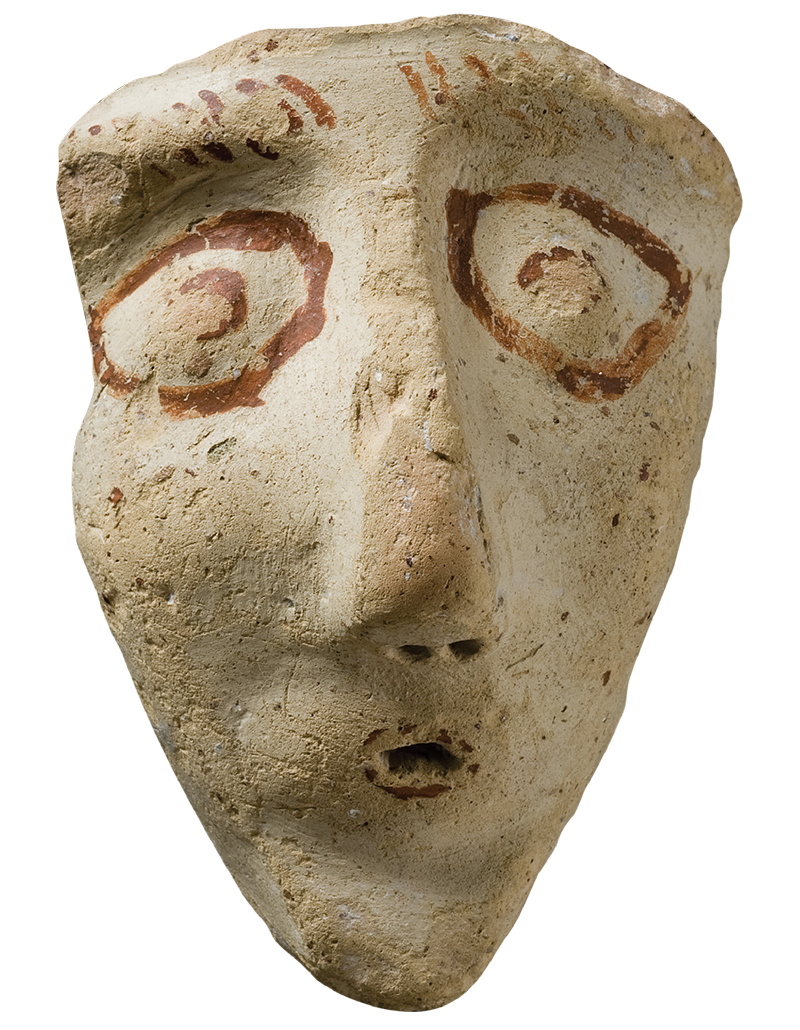THEMATIC SECTION
The Acropolis as a citadel and seat of the local ruler
In four consecutive display cases, artefacts from the Mycenaean Acropolis are presented. In the 13th century BC, the Acropolis, fortified with strong walls, served as the seat of the local ruler and residence of the elite ruling class. The king exercised political and religious authority over the dispersed communities of Attica, which, according to ancient tradition, were now administratively united, having common gods, a common centre of worship on the Acropolis, and a common festival, the Panathenaia, which honoured the patron goddess Athena.
Cases 1-3 present vessels of everyday use and other objects, including figurines, seal stones, spindle whorls, and weights. Case 4 contains a cache of bronze weapons, equipment and tools discovered between the stones of a wall, probably hidden there by their owner – perhaps a bronzesmith who worked on the Acropolis in the 12th century BC.





